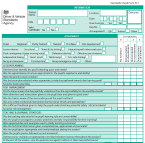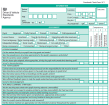



RPM Driving Academy
Head Office
2nd Floor, Lichfield House
29 Darnford Lane
Lichfield
WS14 9RW




PASS with RPM
RPM
Driving Academy



TUITION AVAILABLE
7 DAYS A WEEK
FROM 8AM TO 9PM

Central Head Office: Staffordshire
Northern Office:
Yorkshire
Eastern Office:
Suffolk
Southern Office:
Warwickshire
You are safe in our hands

Become an
Instructor

Learn to
Drive

Learn to
Ride


D.S.A ORDIT TRAINED
Advanced
Lessons




CONTACT: 07919 043643
CONTACT: 07919 043643

ADI Standards Check Training & Rescue
Information about the approved driving instructor (ADI) standards check.
The new check will assess how well you meet the ‘National standard for driver and rider training’, which is why it’s being called a ‘standards check’.
The aim of the standards check is to assess your ability to instruct and whether your instruction helps a person to learn in an effective way.
The standards check will be conducted with a driving examiner observing you delivering a normal 1 hour lesson.
Your RPM Trainer will assess your characteristics, coaching and teaching skills and will discuss these with you thoroughly. The trainer will then adapt the training in order to target any weakness and help you to improve these areas.
Your Trainer is highly qualified and has been on the ORDIT register. This gives you the confidence that you are in safe hands with a knowledgeable Trainer. The Trainer will give you a good understanding of the grading system and how the grade is derived. RPM Trainers have trained many Instructors, also Instructors who have been substandard and with the help of the Trainers have gone on to get excellent grades.
National standard for driver and rider training
The standards check will assess how well you meet this standard, which sets out what you must be able to do and what you must know and understand to provide training to drivers and riders.
This is the procedure that the Driver and Vehicle Standards Agency (DVSA) has given to its driving examiners who will conduct ADI standards checks. It has been published so you can see what will be assessed.
Confirm your attendance
You must email ‘standardscheck@dsa.gsi.gov.uk’ within 10 days to confirm your attendance.
You must provide evidence to support cancellation of the appointment. The ADI Registrar can consider removing your name from the register if you don’t provide this proof, or fail to attend without telling us in advance.
Background
The Road Traffic Act 1988 (as amended) requires ADIs to periodically show that they continue to maintain the minimum standards of instructional ability to remain on the register. DVSA will use the ‘standards check’ to assess how well an ADI meets the standard. The timing of the check is determined by the Registrar.
What to take to your standards check
On the day you’ll need to bring:
1. your ADI registration certificate, even if you aren’t taking money for the lesson
2. a pupil
3. a motor car that is:
- fitted with rear seat belts (Note If the car has rear head restraints these should be fitted)
- roadworthy, safe and reliable (Note Soft top convertibles are not acceptable)
- L plates (or D plates in Wales) if appropriate
Your standards check will not go ahead if you don’t bring these with you. It’s your responsibility to know the area around the test centre where the standards check is taking place and we strongly advise that you take some time to familiarise yourself with it.
What happens during the standards check
The standards check will be conducted by an examiner observing you delivering a normal 1 hour driving lesson. Your examiner will ask you for some background information about your pupil, like how many lessons they’ve had and what you’ve been working on recently. You must demonstrate clearly to the examiner that the needs that you identify have been discussed and agreed with the pupil. The examiner will then tell you to deliver a lesson in exactly the same way as you would normally do. You’ll be assessed against all of the competences set out on the standards check form.
When the standards check has ended
At the end of the standards check the examiner will give you:
- feedback about your performance
- a copy of the standards check assessment form
This will help you to understand your strengths or where you might look to develop your competence. You won’t get any extra written reports or follow-
About the ADI standards check & examiners guidance
Skills, knowledge and understanding required
The ADI is responsible for the standards check lesson. They should make sure they have sound knowledge of the area around their chosen driving test centre (DTC) so they can:
- plan their lesson
- give appropriate directions to their pupil during the standards check
The pupil they bring can be at any level of ability, but cannot be on the ADI register or have passed the ADI part 2 test.
Invite for standards check
An ADI will normally be invited for a standards check at their local driving test centre (DTC). Occasional DTCs or out-
Types of standards check lessons
Typical lesson scenarios that you may need to assess fall into the following categories:
- partly trained, inexperienced, learner
- experienced pupil – about ready to take their practical driving test
- new full licence holder
- experienced full licence holder
Classroom-
Conducting the standards check
An increasing number of ADIs provide training to the emergency services. This training can include taking advantage of legal exemptions such as exceeding speed limits or not complying with traffic signs.
You should tell the ADI that you cannot accompany the lesson for health and safety reasons if you’re told that the proposed lesson plan includes elements which require the trainee to take advantage of the exemptions. You must stop the standards check if the ADI refuses to change the lesson plan to take out these elements.
Format of the standards check
You must conduct all standards checks in English or Welsh observing the ADI delivering a normal 1 hour lesson with a pupil.
You will assess the ADI’s delivery of instruction to their pupil based on the criteria set out in the
sample SC1 standards check reporting form and the ‘National standard for driver and rider training’.
ADI preparation for the standards check
The pupil can accompany the ADI to the waiting room at the DTC. If the pupil decides to wait in the car, you should encourage the ADI to introduce the pupil to you in a relaxed way.
They should tell their pupil to behave exactly as they would normally. Some find that it helps to put their pupil at ease if they explain:
- that the examiner is there to check the ADI is doing their job
- to make sure that the quality of instruction they get meets the minimum standards
The ADI should prepare a normal lesson, with their pupil, based on the student’s learning needs or agreed development strategy.
The theme for the lesson may be one of those listed on the SC1 form, but it may be something else. In that case you should record what the theme was in the ‘other’ box.
Before the lesson starts, you’ll ask the ADI some questions about their pupil.
They should be able to tell you:
- roughly how many hours of tuition their pupil has had
- whether their pupil is getting any other practice, e.g. from parents or others
- their pupil’s strengths and areas for development
The ADI can show you the pupil’s driver’s record (if they have one) before the start of the lesson to help explain their current progress in their agreed training programme.
They must display a valid ADI certificate when they attend their standards check if they’re charging the pupil. They don’t need to display their certificate if they’re not charging the pupil.
You must ask to see the certificate if it’s not displayed. You must not continue with the standards check if they can’t show you their valid ADI certificate.
You can make notes during the lesson to help you identify locations that may not be familiar to you. You should destroy the notes as soon as possible after the standards check is complete. The only record of the standards check will be the completed report form.
Other people present
You can be accompanied by a senior examiner to quality assure your assessment. Whenever possible, you will tell the ADI in advance when this is going to happen. If you couldn’t tell the ADI before the assessment, 5 minutes will be allowed for the ADI to explain to the pupil what’s happening. The lesson can include (if the ADI wishes) driving to the nearest garage or tyre centre to inflate the car’s tyres to the recommended pressures for a heavier load.
The ADI can be accompanied by their trainer/mentor, but that person can’t take part in the standards check lesson in any way.
If a trainer or mentor intends to accompany the ADI and the standards check is also planned for supervision, the supervising examiner will decide whether or not the supervision goes ahead.
At the start of the standards check
When the ADI arrives at the test centre, you’ll confirm their identity and complete the necessary paperwork.
The standards check requires the ADI to show their competence against all the criteria on the assessment form. You should make sure the ADI understands what they are required to do, for example by asking:
Do you have any questions about the standards check before we start?
You’ll then ask about the pupil’s background and how much experience they’ve had.
For example, you could say:
Could you tell me how many lessons your pupil has had and what you have been covering recently?
When you’re satisfied that you have the information you need and that the ADI understands what’s going to happen, you’ll ask them to continue with the lesson, for example by saying:
Thank you, [insert ADI name,] carry on with this lesson in your normal way. I won’t take any part in the lesson and would you plan your lesson to be back here in 1 hour from now.
At the beginning of a standards check an ADI should, normally, discuss the lesson plan and agree it with the pupil. Where the ADI has had little or no experience of working with the pupil they can suggest an assessment drive before finalising a lesson plan. However, the ADI should make sure enough time is available for development and feedback during the lesson.
The standards check will last for 1 hour and the ADI should allow a minimum of 15 minutes at the end of the lesson for a debrief with the examiner.
At the end of the ADI standards check
Once the ADI has finished any reflective discussion with their pupil, you’ll tell them that the test has finished, for example by saying:
Thank you [insert ADI name] I now need to complete my paperwork. This will take me about 10 minutes. I’ll come and find you and give you some feedback on what I’ve seen. You’re both welcome to wait in the waiting room.
The examiner should not debrief the ADI with the pupil present. However, the ADI may request that a third-
Completing the assessment
The assessment is made against 3 broad or ‘high’ areas of competence:
- lesson planning
- risk management
- teaching and learning strategies
The test marking sheet is at sample SC1 standards check reporting form. The 3 high areas of competence are broken down further into 17 lower level competences and a mark will be given for each of these lower level competences. These marks will be totalled to give an overall mark and they will also provide a profile of the areas where the ADI is strong and where they need to do some more development work.
Marks will be given as follows:
- no evidence of competence = 0
- a few elements of competence demonstrated = 1
- competence demonstrated in most elements = 2
- competence demonstrated in all elements = 3
The key thing to understand is that the lower level competences, on the form, can themselves be broken down into elements. The ADI will have to use a range of skills to ensure each of these elements is in place.
For example, the first lower level competence, in the lesson planning section, is ‘Did the ADI identify the pupil’s learning goals and needs?’
To fully satisfy this requirement the ADI must:
- actively recognise the need to understand the pupil’s experience and background
- ask suitable questions
- encourage the pupil to talk about their goals, concerns etc. and actively listen to what the pupil has to say
- understand the significance of what they say
- recognise other indications, e.g. body language, that the pupil is trying to express something but perhaps cannot find the right words
These are what we mean by the elements. Another way to express it would be to think of these as the building blocks which go to make up the lower level competence which is being assessed. For further explanation go the section ‘Interpreting the assessment criteria’.
Competence standards examples
An ADI who makes no attempt to understand their pupil’s needs would be demonstrating no evidence of competence and be marked 0.
An ADI who makes an attempt, asks a few questions, but doesn’t really listen and then goes ahead and does what they intended to do regardless, would be demonstrating a few elements of competence and would be marked 1.
An ADI who grasps the importance of understanding the pupil’s needs and makes a real effort to do so, but who finds it difficult to frame suitable questions, would be demonstrating competence in most elements and would be marked 2.
Competence development
Another way to look at this is from a developmental point of view. If the examiner gives the ADI a score of 3 -
If they give a score of 2 -
If they give a score of 1 -
New Standards Check Grading
Driving instructors will be given one of the following grades after their standards check:
- A grade (85% or over) -
an overall high standard of instruction - B grade (60% or over) -
a sufficient level of competence - Fail (less than 60%) -
an unsatisfactory performance
It will also make it easier for learners and their parents to understand a driving instructor’s grade. They’ll then be able to make a more informed decision when choosing an instructor. DVSA (Driver & Vehicle Standards Agency) wants to keep working with the industry to help the top grade instructors promote the higher level of competence that they’ve worked hard to achieve.
You’ll get a score from 0 to 3 for each of the 17 areas of competence, see marking sheet SC 1
Score Description
3 Keep up the good work
2 Acceptable -
1 Not acceptable -
0 Completely unacceptable
Total score Grade Description
0 to 30 Fail Your performance is unsatisfactory
31 to 42 Grade B You’ll be added to the register of ADIs or remain on it
43 to 51 Grade A You have shown a high standard of instruction and will be
added to the register or remain on it
For more information on
ADI Check Test Training & Rescue call 0800 612 3380


Driving examiner guidance and forms
The procedure that driving examiners will follow when conducting ADI standards checks. These documents have been published so you can see how the assessment works.